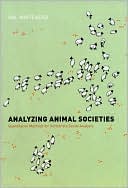Category Books
- Fiction Books & Literature
- Graphic Novels
- Horror
- Mystery & Crime
- Poetry
- Romance Books
- Science Fiction & Fantasy
- Thrillers
- Westerns
- Ages 0-2
- Ages 3-5
- Ages 6-8
- Ages 9-12
- Teens
- Children's Books
- African Americans
- Antiques & Collectibles
- Art, Architecture & Photography
- Bibles & Bible Studies
- Biography
- Business Books
- Christianity
- Computer Books & Technology Books
- Cookbooks, Food & Wine
- Crafts & Hobbies Books
- Education & Teaching
- Engineering
- Entertainment
- Foreign Languages
- Game Books
- Gay & Lesbian
- Health Books, Diet & Fitness Books
- History
- Home & Garden
- Humor Books
- Judaism & Judaica
- Law
- Medical Books
- New Age & Spirituality
- Nonfiction
- Parenting & Family
- Pets
- Philosophy
- Political Books & Current Events Books
- Psychology & Psychotherapy
- Reference
- Religion Books
- Science & Nature
- Self Improvement
- Sex & Relationships
- Social Sciences
- Sports & Adventure
- Study Guides & Test Prep
- Travel
- True Crime
- Weddings
- Women's Studies
Analyzing Animal Societies: Quantitative Methods for Vertebrate Social Analysis »

Authors: Hal Whitehead
ISBN-13: 9780226895239, ISBN-10: 0226895238
Format: Paperback
Publisher: University of Chicago Press
Date Published: July 2008
Edition: (Non-applicable)
Author Biography: Hal Whitehead
Hal Whitehead is a University Research Professor in the Department of Biology at Dalhousie University in Halifax, Nova Scotia, and the author of Sperm Whales: Social Evolution in the Ocean, also published by the University of Chicago Press.
Book Synopsis
Animals lead rich social lives. They care for one another, compete for resources, and mate. Within a society, social relationships may be simple or complex and usually vary considerably, both between different groups of individuals and over time. These social systems are fundamental to biological organization, and animal societies are central to studies of behavioral and evolutionary biology. But how do we study animal societies? How do we take observations of animals fighting, grooming, or forming groups and produce a realistic description or model of their societies?
Analyzing Animal Societies presents a conceptual framework for analyzing social behavior and demonstrates how to put this framework into practice by collecting suitable data on the interactions and associations of individuals so that relationships can be described, and, from these, models can be derived. In addition to presenting the tools, Hal Whitehead illustrates their applicability using a wide range of real data on a variety of animal species—from bats and chimps to dolphins and birds. The techniques that Whitehead describes will be profitably adopted by scientists working with primates, cetaceans, birds, and ungulates, but the tools can be used to study societies of invertebrates, amphibians, and even humans. Analyzing Animal Societies will become a standard reference for those studying vertebrate social behavior and will give to these studies the kind of quality standard already in use in other areas of the life sciences.
Choice
“This is an essential handbook on the quantitative analysis of social structure in animal groups… Whitehead’s approachable writing style makes this a book to read, enjoy, and have on the shelf Researchers and students in this field will find [the book] invaluable and will refer to it often.”—Choice
Table of Contents
Acknowledgments
Conventions and Abbreviations
1 Analyzing Social Structure
1.1 Introduction
1.2 What Is Social Structure?
1.3 Why Social Structure Is Important
1.4 Conceptualizing Animal Societies: A Brief History
1.5 Ethology and Behavioral Ecology
1.6 Hinde’s Ethological Conceptual Framework of Social Structure
1.7 Other Definitions and Concepts of Social Structure
1.8 Elements and Measures of Social Structure
1.9 The Functional Why Questions, and Ecology
1.10 Examples of Social Analyses
1.11 Problems with Analyzing Social Structure
2 Technical Matters
2.1 Modes of Scientific Enquiry
2.2 Basic Descriptive Statistics
2.3 Precision of Statistics: Bootstraps and Jackknives
2.4 Hypothesis Testing
2.5 Data Matrices
2.6 Ordination
2.7 Classification
2.8 Model Fitting and Selection: the Method of Likelihood and the Akaike Information Criterion
2.9 Computer Programs
3 Observing Interactions and Associations: Collecting Data
3.1 Types of Behavior
3.2 Interactions
3.3 Associations
3.4 Groups
3.5 Identifying Individuals
3.6 Class Data
3.7 Collecting Social Data
3.8 Data Formats
3.9 Sampling Periods
3.10 Attributes of Data Sets
3.11 How Large a Data Set Is Needed for Social Analysis?
Box 3.1 Precision and Power of Social Analysis
4 Describing Relationships
4.1 Relationships
4.2 Nonsocial Measures of Relationship
4.3 Social Attributes of Individuals, Including Gregariousness
4.4 Rates of Interaction
4.5 Association Indices
Box 4.1 Choosing an Association Index: Recommendations
4.6 Temporal Patterning of Interactions/Associations
4.7 Relative Relationships: Multivariate Description of Relationships
4.8 Types of Relationships
4.9 “Special” Relationships: Permutation Tests for Preferred/Avoided Companionships
4.10 Quantifying the Strength of a Relationship and the Bond
4.11 Relationships between Classes
Box 4.2 Describing Relationships: Recommendations
5 Describing and Modeling Social Structure
Box 5.1 Omitting Individuals from Studies of Social Structure
5.1 Attributes of Social Structure
5.2 Single-Measure Displays of Social Structure
Box 5.2 Visual Displays of Social Structure: General Guidelines
5.3 &nbs.
Subjects
 Psychology
Psychology  Psychology - Theory, History & Research
Psychology - Theory, History & ResearchPsychology & Psychotherapy
 Psychology - Theory, History & Research
Psychology - Theory, History & Research  Animal Behavior & Psychology
Animal Behavior & PsychologyScience & Nature
 Nature
Nature  Animals - General & Miscellaneous
Animals - General & MiscellaneousScience & Nature
 Nature
Nature  Animals - Habitats & Behaviors - General & Miscellaneous
Animals - Habitats & Behaviors - General & MiscellaneousScience & Nature
 All Science & Nature
All Science & Nature  Nature
NatureMedical Books
 Psychology & Psychotherapy
Psychology & Psychotherapy  Psychology - Theory, History & Research
Psychology - Theory, History & ResearchNonfiction
 Science & Nature
Science & Nature  Nature
NatureNonfiction
 Science & Nature
Science & Nature  All Science & Nature
All Science & Nature
